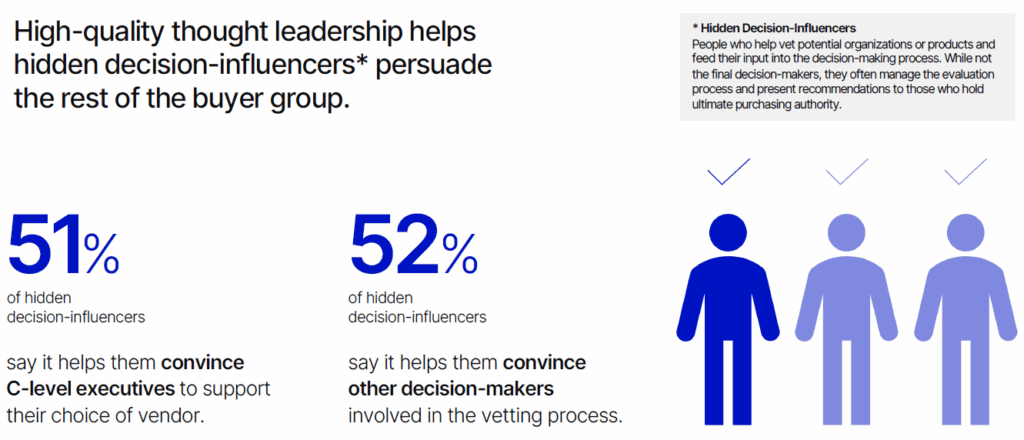The Content Marketer's Guide to Thought Leadership

Oprah. Dave Ramsey. Seth Godin.
Besides being highly successful in business, these people are considered thought-leaders – or experts — in their industry.
Similarly, as a marketer, being an expert in your field is crucial. To do that, you have to drive traffic to your site, nurture and convert leads, and build brand authority and reputation. That’s where thought leadership comes in.
Below, let’s review what thought leadership is and how to use it in your marketing strategy. We’ll also explore the best examples and types of content you can consider creating.
A person or company might use thought leadership as a content marketing strategy because providing value to your audience demonstrates your brand helpfulness. Then, down the road when someone is seeking a product or service like the ones you provide, they’ll turn to you first.
If you’re good at it, you’ll increase awareness among your target audience, generate more leads, improve social proof, and boost engagement online.
For instance, Brian Dean is a thought leader in the SEO space. By regularly posting content related to his expertise, he’s proven his value as a content marketer worth following. More on him later.
But first, how do you incorporate thought leadership into your marketing strategy? Here, we’ll analyze the top thought leadership marketing tips.
Thought Leadership Marketing
Now that we’ve covered what thought leadership is, let’s review some best practices before you get started.
1. Know your audience and continue learning about them.
Knowing your audience is the key to succeeding with any marketing strategy, and thought leadership is no different. It starts with your buyer persona. What motivates or inspires your audience? What are their pain points? What questions are they asking?
To figure this out, look on social media or conduct customer interviews. Once you know these things, you can begin answering their questions with thought leadership content.
Additionally, it’s important to continuously check-in and reevaluate your buyer personas. Are your customer’s questions changing over time? Do their pain points look the same today as they did when you first began as a company? People evolve, and so will your audience.
2. Be active on social media.
Social media is an effective vehicle to build your brand and authority. First, social media keeps you active and engaged with your community. Second, you can use it to comment on industry news and ensure your brand voice is heard in conversations regarding relevant industry trends.
Plus, you can use social media to promote thought leadership content in an organic way without seeming too promotional.
3. Publish a variety of content — in a variety of places.
Creating thought leadership content doesn’t just mean posting on your blog. It also means being active on social media, guest posting on other sites, and speaking at events or on podcasts.
It’s important to mix it up with owned media versus other media sources. Consider having a combination of written, video, and audio content, like podcasts.
Ultimately, …read more
Source:: HubSpot Blog









